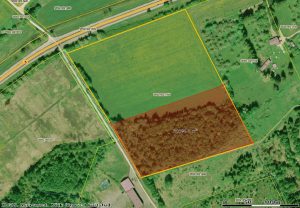
Several topics have been lately highlighted related to the sector of forestry – forest management proceeding from the innovations in the forest act, impact of cutting activities on the birds and unethical business activities in the forestry sector.
According to the data of the land cadastre and land register of 2015 the Estonian physical persons own 65% of the private forest land.[1] The forest owners including about 107 thousand private persons also involve the ones who do not follow the condition of their forest property and do not think about the sale of forest or cutting right, renewal of cultures or maintenance works in the forest.
The active discussion and the news feed regarding forestry coming from different media channels could arouse greater interest in some sectorally passive forest owner to dwell upon the condition of its forest property and the related future steps.
The forest act says that the forest owner is obliged to follow the condition of his/her forest and protect it against the deterioration of growth conditions. The citizen is obliged to follow the law and naturally no private forest owner wishes that the condition of his/her forest ownership and thereby the value would deteriorate, but is the forest management a sector where each forest owner can act competently?
Forest is by far no uniform by varying by types of growth sites, type composition, age of trees and other properties. The non-expert of forestry sector could find it complicated to orientate in the specific forestry terms and it is reasonable to ask for relevant advice from the specialists for the correct assessment of one’s forest.
The forest management means forest inventory and planning of forest management works [2], as to which the forest owner without professional preparation is supported by the forest management plan. The forest management plan helps the owner to get an overview of the properties, stock and condition of its forest, the plan also includes the recommendations for prudent forest management.
Even if the wish of the forest owner is not to gain income in the face of the cut, this could be necessary for the benefit of the good condition of the forest. The forest management plan includes correct methods for the maintenance of the forest which involve many different works such as improvement cutting, land improvement, forest protection and forest renewal.
The private forest owners can also apply for the aids for the assessment of the condition of one’s forest and forest maintenance works [3]- here motivation could be found to take a position of a reasonable forest owner instead of passive forest owner, deal with one’s forest and increase its value for the investment as well as a legacy for future generations.
[1] http://www.eramets.ee/wp-content/uploads/2013/01/erametsaomandi_struktuur_ja_kasutamine_2015.pdf lk 11
[2] https://www.riigiteataja.ee/akt/106072017004?leiaKehtiv §11 lg 2



